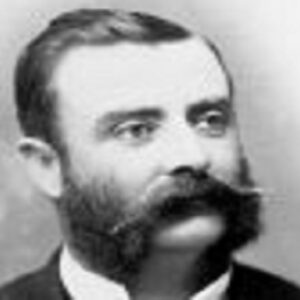William Pitt was a well-known Australian architect and politician. His contribution to the city of Melbourne as an architect is unrivaled. He was one of the key creative forces behind the establishment of the city’s distinct personality. Pitt brazenly displayed opulence and excitement with his flamboyant Neo-Gothic and Second Empire styles. He designed the Princess Theatre, St Kilda Town Hall, Queens Bridge, Bryant and May Factory, Wellington Opera House, Rialto Buildings, Olderfleet Buildings, and the Victoria Brewery, among many others. During the Melbourne land boom, he became one of the most sought-after architects. His designs may be found in some of Melbourne’s most opulent structures, including those that line Collins Street. He was a member of the Gothic revival movement and worked in Second Empire architectural styles. He also specialized in theater and interior design. Melbourne, Ballarat, Sydney, Adelaide, Wellington, and Auckland are just a few of his recognized interior design projects. He was also a member of the North Yarra Province of the Victorian Legislative Council.
Childhood and Adolescence
William Pitt was born in Melbourne, Australia, on June 4, 1855, to artist William Pitt and his wife, Jane. His parents were from the English town of Sunderland.
He grew up in Melbourne, Victoria’s suburban neighborhood of St Kilda. He went to the Hofwyl School in St Kilda and then to Carlton’s George Henry Neighbour’s College.
He eventually moved to Abbotsford, a suburb of Melbourne. He began his training in the field of architecture in 1875.
Career of William Pitt
He was involved in the repair and re-opening of the historic Princess Theatre in 1877. This structure had one of the world’s first movable roofs and ceilings.
He got his first big break in the realm of architecture when he was hired to design the Melbourne Coffee Palace in 1879. He was also given an award for this project.
In 1883, he was given the commission to construct the Gordon House apartments in Melbourne’s Little Bourke Street. This was one of his very first designs in the gothic style.
He became Vice-President of the Victorian Institute of Architects in 1887. This period was extremely successful for him, and he was able to explore with other gothic styles.
The Federal Coffee Palace, one of his most ambitious and large-scale undertakings, was completed in 1888. This was one of Melbourne’s largest and tallest structures at the time. In later years, it was dismantled.
In 1888, he was elected to the Collingwood City Council, and in 1890, he was elected Mayor. In 1894, he stepped down from the council. He was also a member of the North Yarra Province of the Victorian Legislative Council.
He designed the Kilda Town Hall, the city hall of St Kilda, Australia, which was built in 1890. This structure was built in the mid-eighteenth-century Neoclassical architectural style of classical revival.
His financial situation was not good around 1890, and his assets plummeted to the point that he had to declare bankruptcy. Despite this, he was named commissioner of the Melbourne Board of Works the following year.
He was appointed chairman of the Melbourne Harbor Trust in 1901. The next year, he ventured into the area of domestic space design, designing the Avalon Mansion at 70 Queens Road.
He remodeled the interiors of Sydney’s famed Her Majesty’s Theatre, which was located on 107 Quay Street in Australia, in 1903. This structure was eventually dismantled.
He designed the Bryant and May Factory, which is located in Cremorne, Melbourne, Australia. This was built in 1909, but was afterwards bought by a British firm.
The Wellington Opera House, which opened in 1914, was one of his most famous works. This is in New Zealand, and it was built under the supervision of a local architect named Albert Liddy.
The Victorian Racing Club, Sir Charles Hotham Hotel, Denton Hat Mills, Old Rialto Building, former Melbourne Stock Exchange, Rialto Buildings, Olderfleet Buildings, and the Victoria Brewery are among his notable works.
Achievements & Awards
He won the first award for his design of the Queens Bridge, which spans the Yarra River, in 1880.
Personal History and Legacy
On October 23, 1889, he married Elizabeth Mary Liddy.
He died in Abbotsford on May 25, 1918, at the age of 62. The St Kilda General Cemetery was where he was laid to rest.
Estimated Net Worth
The estimated net worth of William Pitt is unknown.
Trivia
This renowned architect designed iconic Melbourne structures such as the Princess Theatre, Queens Bridge, Wellington Opera House, and Victoria Brewery.


